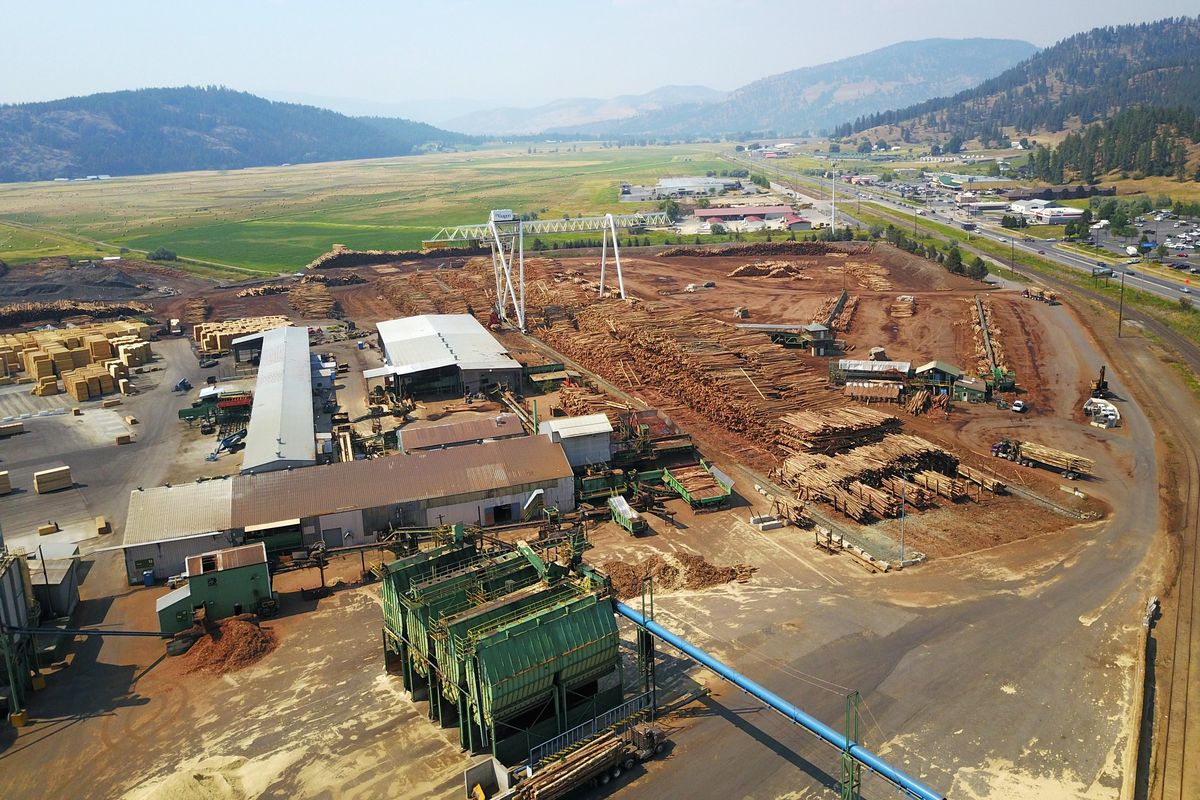McMorris Rodgers, U.S. Forest Service chief tout public-private forest thinning partnership in Colville Forest

COLVILLE – Fire-prone trees are falling in the Colville National Forest, and Rep. Cathy McMorris Rodgers and the U.S. Forest Service hope they’ll make a sound in the nation’s capital.
The congresswoman was joined by Vicki Christiansen, the interim chief of the U.S. Forest Service, on a tour Thursday of areas north of Colville where the firm Vaagen Bros. won a unique contract to thin 54,000 acres of dense forestland. Known as the “A to Z Program” – so named because Vaagen is responsible for all portions of the work, including environmental review – McMorris Rodgers and Christiansen said the model illustrates the future of forest management.
“I often say that the challenges of this forest, and our nation, cannot come out of the Treasury,” said Christiansen, a 1983 alumna of the University of Washington who cut her teeth fighting forest fires with the state’s Department of Natural Resources. “They have to come out of the marketplace.”
That marketplace produced Vaagen Bros., a lumber firm that has operated a mill in Colville since the early 1970s. The firm won a competitive bidding contract to complete the thinning work in 2013 and, after some legal wrangling that will continue in a federal courtroom in Spokane later this month, began harvesting lumber in what is known as the Mill Creek area last year.
Crews are performing the same work to reduce tree canopy that would have otherwise been conducted by the U.S. Forest Service, which didn’t have the cash or the resources to keep up with the backlog of thinning that needed to be done to reduce the threat of massive wildfires, said Rodney Smoldon, the forest supervisor for the Colville National Forest.
“I would say it’s been a big success,” Smoldon told assembled lawmakers and officials, beneath a sky hazy from the smoke of fires raging in central Washington and Canada.
The private partners are treating areas of the forest faster, at lower costs and producing more sellable lumber than the Forest Service could on its own, Smoldon said. Where the Forest Service estimated it could treat 6,000 acres of forestland and produce about 45 million to 60 million board feet of lumber each year, the partnership has allowed crews to handle 16,000 acres a year, producing close to 150 million board feet of lumber.
That means jobs for the local economy, said McMorris Rodgers. A 2007 study by researchers at the University of Washington found that for each additional million board feet of lumber produced, roughly 12 jobs are created in forest-related industries.
McMorris Rodgers has introduced federal legislation that would enable similar programs to take place elsewhere in the country. In the spring, she invited Christiansen to the Colville National Forest to tour the project area and see for herself the fruits of the partnership between the Forest Service, Vaagen Bros. and Northwest Management, Inc., the forestry service hired to supervise the thinning work to ensure compliance with Forest Service standards.
“Our goal here is to improve the health of the Colville National Forest,” McMorris Rodgers said. “That is one of the best deterrents to catastrophic wildfires, is to have healthy forests. When you have trees that are stressed and damaged, that makes them more susceptible to the fire.”
The plan is not without controversy. After Vaagen Bros. was awarded the contract, the nonprofit group Alliance for the Wild Rockies filed a federal lawsuit in Spokane alleging violations of federal environmental and forestry laws.
The group, based in Montana, sought an injunction to halt the project. That was thrown out in October 2016 by U.S. District Court Judge Rosanna M. Peterson, who cited the extensive planning that had taken place prior to harvesting operations. But the group hopes to win a hearing Aug. 22 that could still stop the project.
“This is a huge step toward privatization, and a huge problem for public land,” said Jeff Juel, a private consultant who has previously worked for the Wild Rockies group, said.
Duane Vaagen, president of Vaagen Bros., said the company had received local support from county commissioners and the Forest Service in the lawsuit.
“It would be a real blow if we had to halt any of this,” he said.
Project supporters say a coalition of local conservation firms, including The Lands Council, the Kettle Range Conservation Group and The Nature Conservancy, are involved in the Mill Creek work.
Vaagen pointed to a ridge several miles up a newly leveled forest road, upgraded as a result of the A to Z Project to allow hunting and berry-picking access in areas of the Colville previously inaccessible. About 40 acres of forestland burned on the ridge last July on a scorching summer day with howling winds. Halting those types of fires is the purpose of the A to Z Project, Vaagen said.
“What we want to do is get more of the fuels out,” he said.
The Forest Service hopes to launch another A to Z Project in the Colville forest near Chewelah and has already begun the planning process. Christiansen said she was encouraged by what she saw Thursday in the woods of northeastern Washington.
“This is a way that is fully transparent,” she said. “It has the competitiveness that is needed to bring in the market sector in helping to get treatments done.”